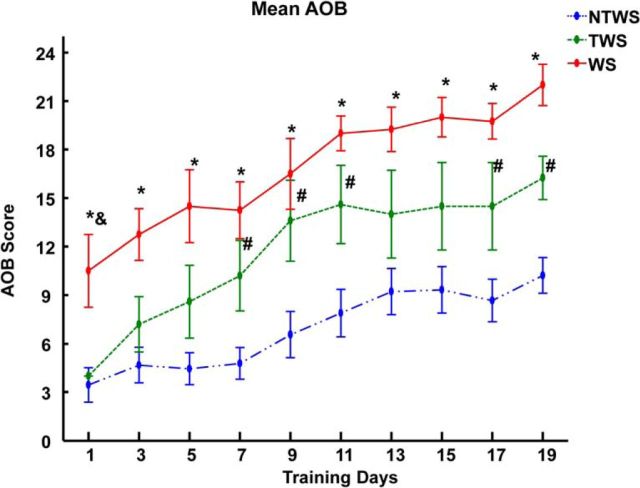Figure 4.
Robotic rehabilitation training improves hindlimb motor performance score (AOB score) in the WS, TWS, and NTWS groups. Plot represents mean ± SE of AOB score changes for each group over the course of robot rehabilitation training. There was a significant training effect (two-way repeated-measures ANOVA, F(3.99,59.86) = 31.28, ***p < 0.001) on AOB score over time in all three groups of rats. Post hoc comparisons of the training effect indicated that the AOB scores on the last training day were significantly greater than the first training day for each group (p < 0.05 for each group). There were also differences seen in the AOB recovery performances among the groups as indicated by the group effect reported in the two-way repeated-measures ANOVA (F(2,15) = 15.98, ***p < 0.001). Post hoc comparisons of the group effect showed that the mean AOB score for the NTWS group was significantly less than both the WS (p < 0.001) and TWS groups (p < 0.05), whereas the TWS group was not different from the WS group (p = 0.086). As shown in the figure, this is also evident in the daily post hoc comparisons among groups. *Significant difference between WS and NTWS groups (p < 0.05). &Significant difference between WS and TWS groups (p < 0.05). #Significant difference between TWS and NTWS groups (p < 0.05).

